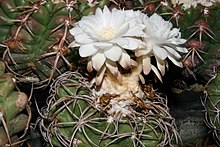
Discocactus is a genus of tropical cacti. Discocactus plants are endemic to southern Brazil, eastern Bolivia, and northern Paraguay. These species are in the risk of extinction in the wild.
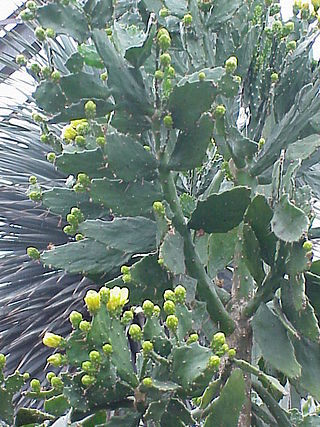
Brasiliopuntia is a genus in the cactus family, Cactaceae. It contains only one species, Brasiliopuntia brasiliensis.

Facheiroa cephaliomelana is a species of plant in the family Cactaceae.

Melocactus azureus is a species of cactus. It is endemic to Brazil, where it is known only from Bahia. It is locally abundant but the populations are fragmented and vulnerable to habitat degradation.
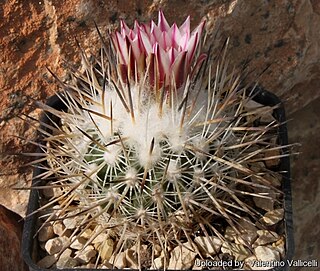
Rapicactus mandragora, synonym Turbinicarpus mandragora, is a species of plant in the family Cactaceae.

Uebelmannia buiningii is a species of plant in the family Cactaceae. It is endemic to Brazil. Its natural habitat is dry savanna. It is threatened by habitat loss.

Uebelmannia gummifera is a species of plant in the family Cactaceae. It is endemic to Brazil. Its natural habitat is dry savanna. It is threatened by habitat loss.

Cipocereus bradei is a species of cactus. It is endemic to the state of Minas Gerais in Brazil. It is threatened by habitat loss.

Echinocereus fendleri is a species of cactus known by the common names pinkflower hedgehog cactus and Fendler's hedgehog cactus. It is named in honor of Augustus Fendler.
Frailea gracillima is a species of Frailea from Brazil, Paraguay, and Uruguay.
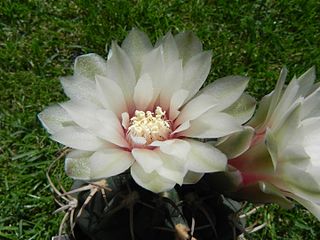
Gymnocalycium bayrianum is a species of Gymnocalycium from Argentina.

Cereus phatnospermus, synonym Cereus kroenleinii, is a species of columnar cactus found in Brazil, Bolivia, and Paraguay.
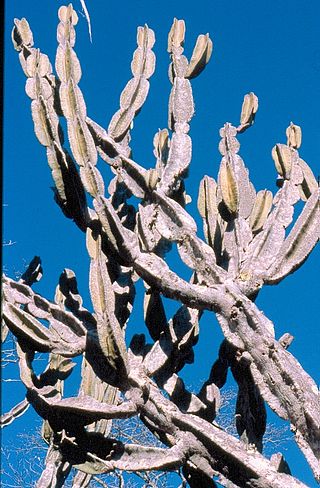
Cereus pierre-braunianus is a species of columnar cactus found in NE Goiás in Brazil.

Mirabella albicaulis, synonym Cereus albicaulis, is a species of flowering plant in the family Cactaceae, native to Northeast and Southeast Brazil. It was first described by Britton and Rose in 1920 as Acanthocereus albicaulis.
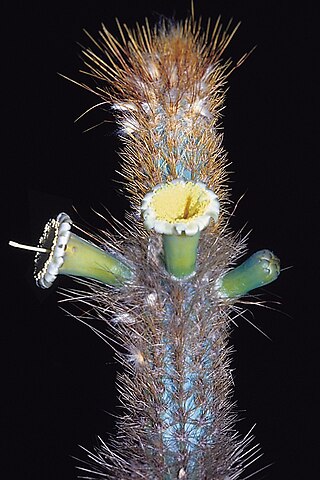
Pilosocereus albisummus is a species of Pilosocereus found in Minas Gerais, Brazil.
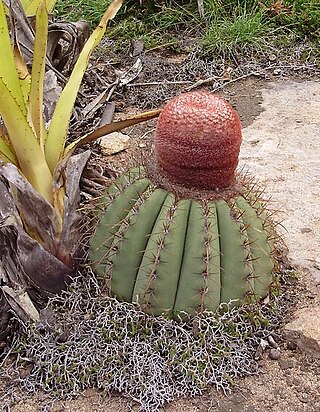
Melocactus ernesti is one of the Turk's cap cacti, and is native to Bahia and Minas Gerais States, Brazil.

Xiquexique gounellei is a species of plant in the genus Xiquexique of the cactus family. Common names include "Alastrado", "Chique-Chique", "Xique-Xique" and "Xique-Xique das Pedras".

Melocactus bahiensis is a species of Melocactus found in Bahia, Brazil.
Discocactus pseudoinsignis is a species of Discocactus found in Brazil.

Micranthocereus purpureus is a species of Micranthocereus found in Brazil.
